20 Popular Foods With Artificial Dyes the FDA Is Banning
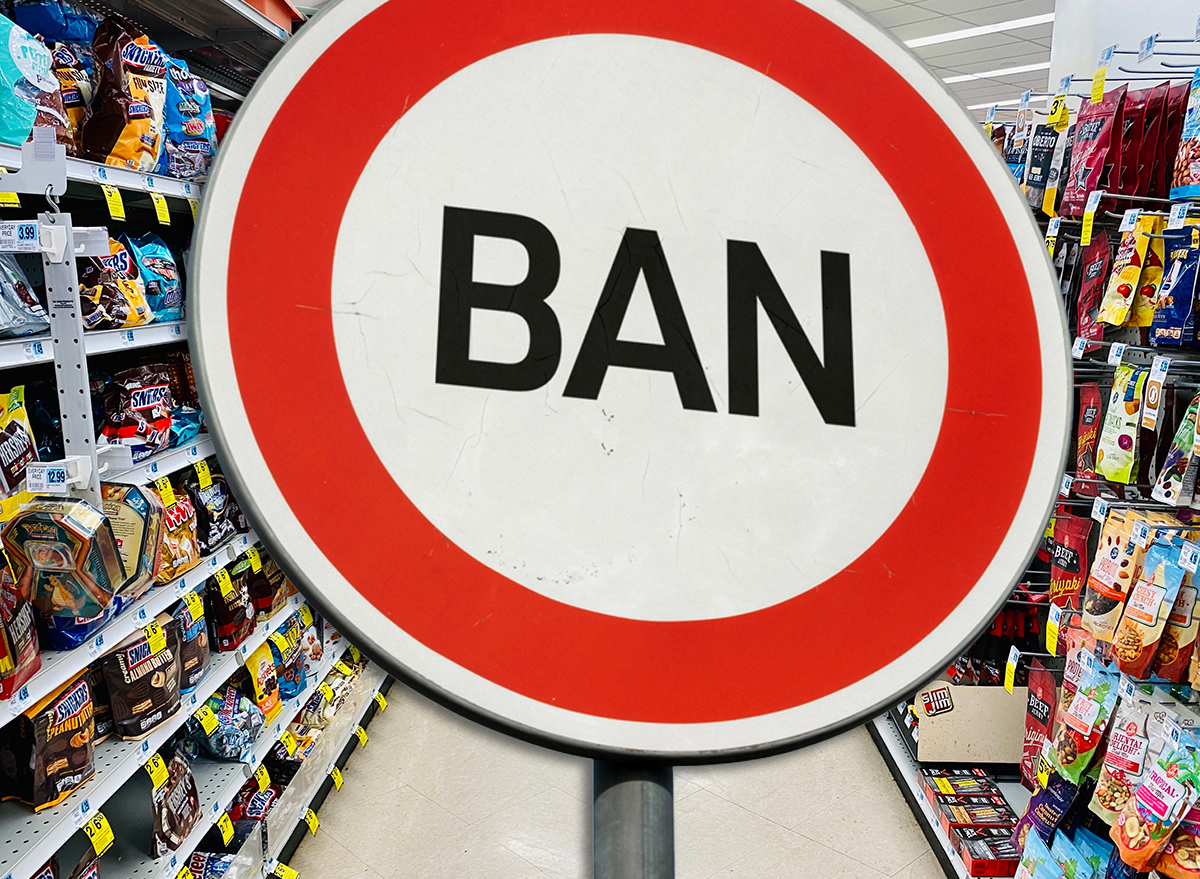
Health and Human Services Secretary Robert F. Kennedy Jr. has always advocated for the elimination of dyes in food and drinks and he's now making good on his promise. He stated on Tuesday that the U.S. government will phase out all artificial dyes from the food supply by the end of 2026. Eight dyes will be removed, including: FD&C Blue Nos. 1 and 2, FD&C Green No. 3, FD&C Red No. 40, FD&C Yellow Nos 5 and 6, with the process beginning to revoke authorization of Orange B, Citrus Red No. 2.
"For too long, some food producers have been feeding Americans petroleum-based chemicals without their knowledge or consent," said Kennedy, Jr. in a release. "These poisonous compounds offer no nutritional benefit and pose real, measurable dangers to our children's health and development. That era is coming to an end. We're restoring gold-standard science, applying common sense, and beginning to earn back the public's trust. And we're doing it by working with industry to get these toxic dyes out of the foods our families eat every day."
The FDA Commissioner Marty Makary, MD, MPH is also on board to rid food of these harmful dyes that have been linked to several health issues.
"Today, the FDA is asking food companies to substitute petrochemical dyes with natural ingredients for American children as they already do in Europe and Canada," he said in the release. "We have a new epidemic of childhood diabetes, obesity, depression, and ADHD. Given the growing concerns of doctors and parents about the potential role of petroleum-based food dyes, we should not be taking risks and do everything possible to safeguard the health of our children."
Artificial dyes are in everyday food and drinks people consume, oftentimes without knowing the concerns. To help navigate through the plethora of products containing the dyes, here are 20 common foods with dyes the FDA is banning.
Gatorade
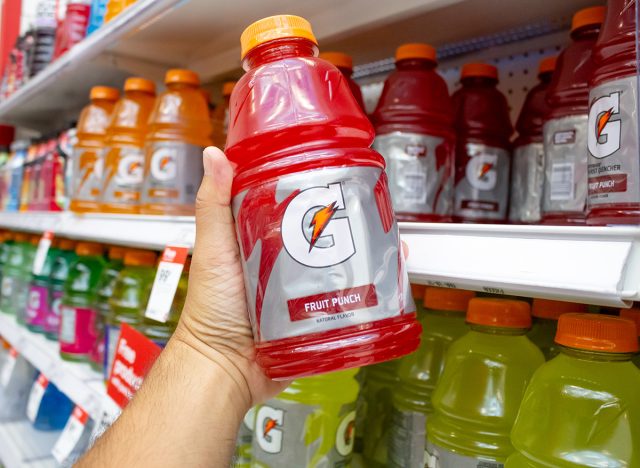
Contains Blue Dye No. 1, Red No. 40, Yellow No. 5, and Yellow No. 6 depending on flavor (e.g. Fruit Punch, Lemon-Lime, Orange).
Many turn to Gatorade as a go-to to feel hydrated and replenish electrolytes, but it's one of the worst offenders for food dyes that's up there with candy and certain breakfast cereals like Froot Loops. Depending on the flavor such as Fruit Punch, Lemon-Lime, Orange, etc, Gatorade contains Blue Dye No. 1, Red No. 40, Yellow No. 5, and Yellow No. 6. According to the Center for Science in the Public Interest, animal studies have linked this dye to health risks, which has prompted tighter restrictions.
Mountain Dew
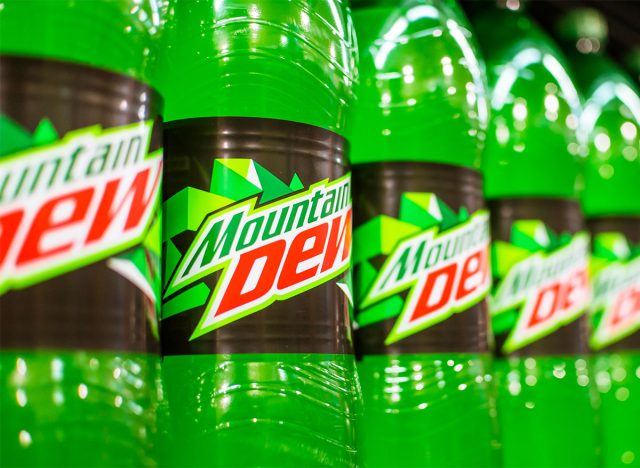
Contains Yellow No. 5.
Mountain Dew is a big draw for people who love a citrusy flavor that's refreshing and tasty. Plus, it's loaded with caffeine, so you'll get a big burst of quick energy that will carry you through the afternoon. But Mountain Dew isn't neon yellow by accident. Yellow No. 5 gives it its distinct color, which isn't great for your overall well-being, per the FDA.
Kool-Aid (Various Flavors)
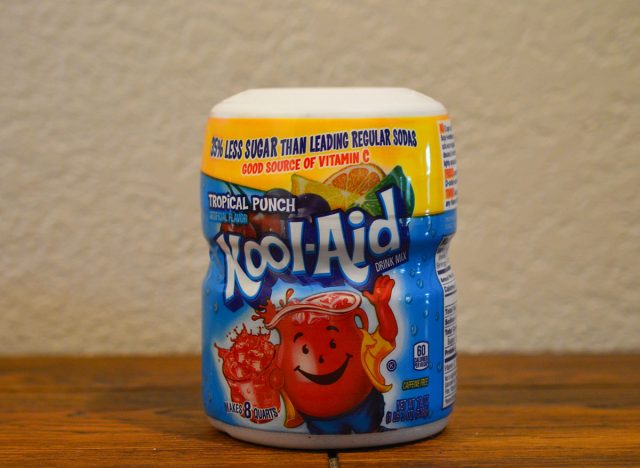
Contains Red No. 40, Yellow No. 5, Blue No. 1.
Kool-Aid is a summertime fun drink for kids to keep them cool, but the ingredients are problematic. Depending on the flavor, Kool-Aid contains Red No. 40, Yellow No. 5, and Blue No. 1. With Kennedy Jr. working to make kids healthier, the FDA is now encouraging manufacturers to use natural alternatives.
SunnyD Tangy Original
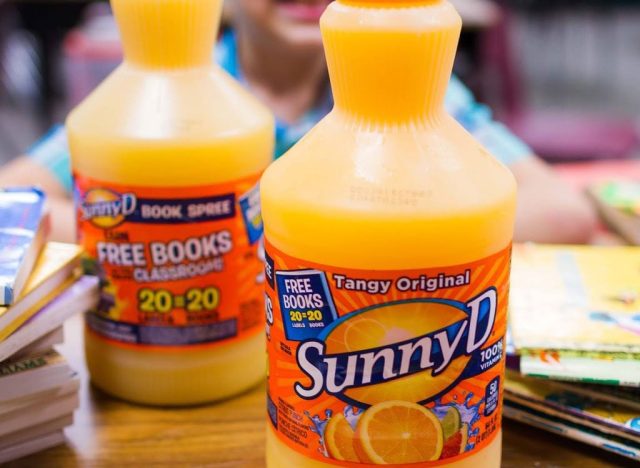
Contains Yellow No. 5 and Yellow No. 6.
SunnyD Tangy Original seems like a healthy breakfast drink to get a healthy dose of vitamin C, but it contains both Yellow No. 5 and Yellow No. 6., according to SunnyD's website. The Environmental Working Group (EWG) identifies these as food additives of moderate concern and the FDA is recommending the removal of the dyes for healthier options.
Yoo-hoo Strawberry
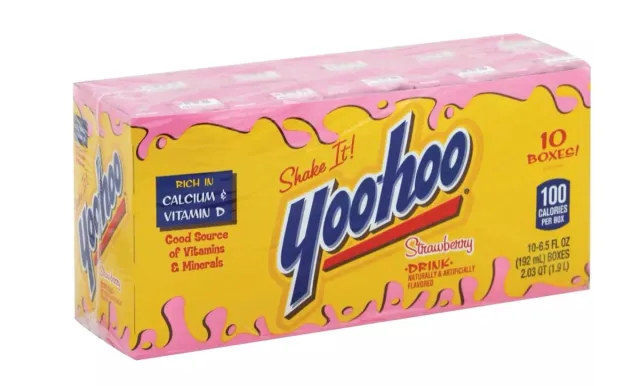
Contains Red No. 3, Red No. 40 and Blue 1
Yoo-hoo Strawberry is advertised as a calcium-rich drink that's high in vitamin D, nearly fat-free and 100% caffeine-free. That sounds good on the surface until you read the label. It contains Red No. 3, Red No. 40 and Blue 1, according to the ingredients list. Red No. 3 has already been banned and must be removed from all foods and medications by 2027 due to health concerns, according to the Cleveland Clinic.
Jolly Rancher Hard Candy

Contains Red No. 40, Yellow No. 5, Yellow No. 6, and Blue No. 1.
Jolly Rancher Hard Candy is a favorite among many, but look at the ingredients and you'll see it contains several dyes like Red No. 40, Yellow No. 5, Yellow No. 6, and Blue No. 1. The FDA is encouraging the manufacturer to rid the candy of the dyes in favor of healthier choices.
Skittles
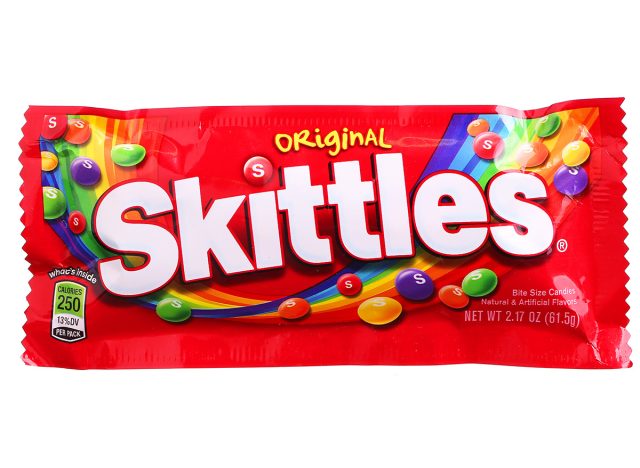
Contains Red No. 40, Yellow No. 5, Yellow No. 6, Blue No. 1
Skittles has bold, fruity flavors and eye-catching colors that pop, but that's thanks to Red No. 40, Yellow No. 5, Yellow No. 6 and Blue No. 1. The bite-sized candy contains various dyes depending on the flavor and the FDA plans to phase out the artificial dyes by the end of next year.
M&M's (Original)
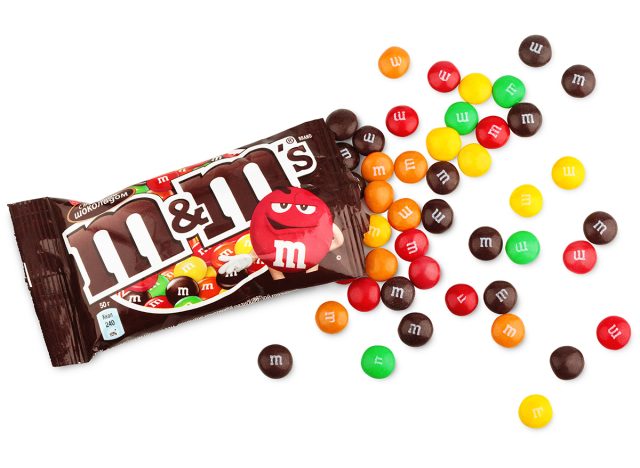
Contains Red No. 40, Yellow No. 5, Yellow No. 6, Blue No. 1, and Blue No. 2.
The rainbow of M&M's will soon be dimmed if the FDA has its way. The popular chocolate-coated candy contains Red No. 40, Yellow No. 5, Yellow No. 6, Blue No. 1, and Blue No. 2. depending on the flavor and due to health concerns, the FDA will remove these dyes, like other countries already have.
Starburst
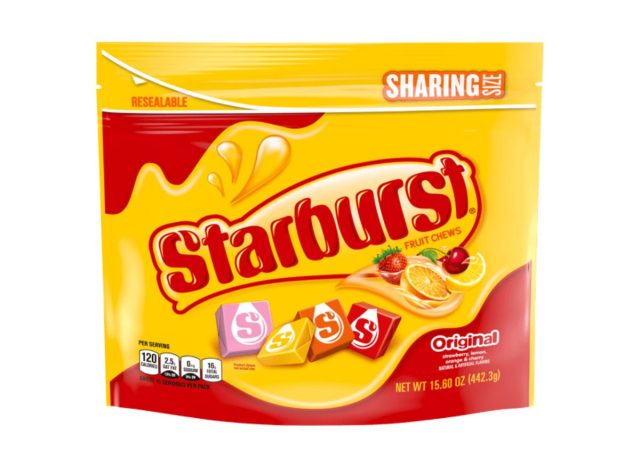
Contains Blue No, 1, Red No. 40, Yellow No. 5, and Yellow No. 6.
Starburst is a bag full of artificial dyes, which include Blue No, 1, Red No. 40, Yellow No. 5, and Yellow No. 6. The hard, yet chewy candies are individually wrapped, making them easy to share, but the FDA does not deem the colorful dyes healthy.
Swedish Fish
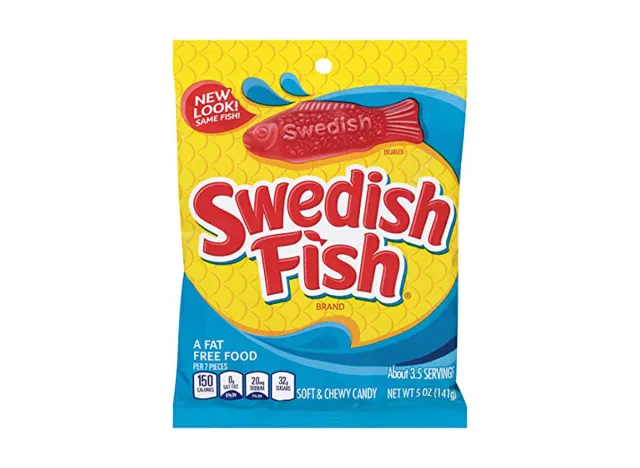
Contains Red No. 40.
Swedish Fish have a unique charm that allures kids and adults, but the fun-shaped candy contains Red No. 40. Isn't currently banned in the U.S. or Europe, but until Kennedy Jr.'s recent announcement, it was regulated in foods. Now it will be removed due to health concerns.
Froot Loops
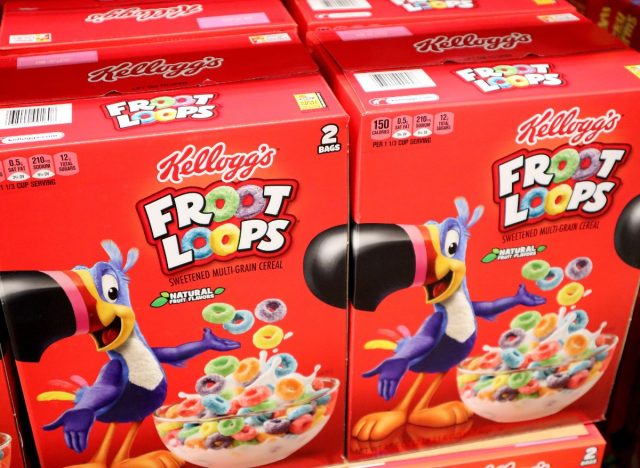
Contains Red No. 40, Yellow No. 6, Blue No. 1
Froot Loops is a delicious breakfast staple in many households that children and adults both love, but it's filled with Red No. 40, Yellow No. 6, and Blue No. 1. dyes. Food dyes make products more appealing to consumers, but the FDA is recommending manufacturers swap them out for healthier alternatives.
Apple Jacks
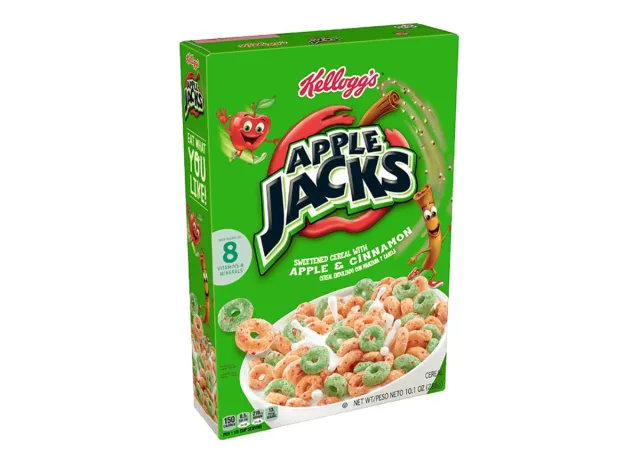
Contains Red No. 40, Blue 1Yellow No. 6.
To enhance the visual appeal of Apple Jacks, Red No. 40, Blue 1 and Yellow No. 6. Is used. But some studies have suggested the dyes are linked to health issues.
Cap'n Crunch's Crunch Berries

Contains Red No. 40 and Blue No. 1.
According to the Environmental Working Group, Cap'n Crunch's Crunch Berries "Contains food additives of higher concern" due to Red No. 40 and Blue No. 1. Since there are common health risks associated with the dyes, the FDA is encouraging manufacturers to replace them with natural options.
Trix Cereal

Contains Red No. 40, Yellow No. 6, Blue No. 1
Trix brightens up your morning with a colorful bowl of crunchy corn puffs thanks to Red No. 40, Yellow No. 6, Blue No. 1. But it's deemed pretty unhealthy due to the high sugar content, low nutritional value and dyes that will soon be banned from foods.
Kellogg's Hot Fudge Sundae Pop-Tarts
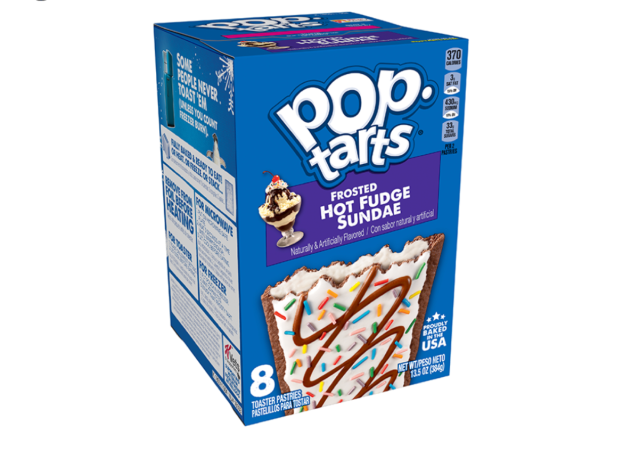
Contains Red No. 40, Yellow No. 5, Yellow No. 6, Blue No. 1, and Blue No. 2.
Kellogg's Hot Fudge Sundae Pop-Tarts might be a quick and convenient way to fill up in the mornings, but it's loaded with sugar and problematic ingredients like Red No. 40, Yellow No. 5, Yellow No. 6, Blue No. 1, and Blue No. 2.
Doritos Nacho Cheese
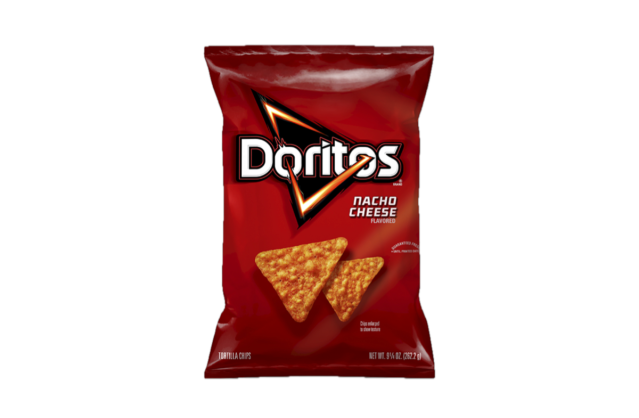
Contains Red No. 40, Yellow No. 5, and Yellow No. 6.
With its perfect blend of flavor, texture and crunch, Doritos Nacho Cheese might be one of the greatest chips on the planet. But it's packed with three different artificial dyes–Red No. 40, Yellow No. 5, and Yellow No. 6. and the FDA is encouraging the manufacturer to remove the unhealthy dyes for natural choices that aren't linked to health problems.
Cheetos
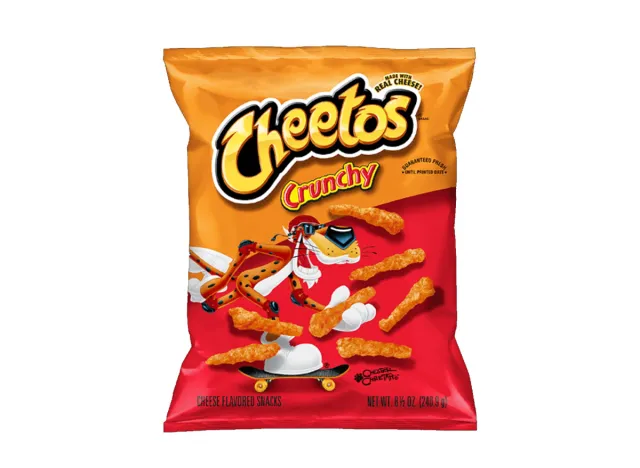
Contains Yellow No. 6.
Cheetos is another finger-licking snack that's insanely beloved. Sure, orange dust gets everywhere, but fans don't seem to mind. But that bright orange color is the work of Yellow No. 6., which has been connected to several health issues so the FDA is working with manufacturers to remove the unhealthy dyes for healthier ingredients.
Cheez-It Crackers
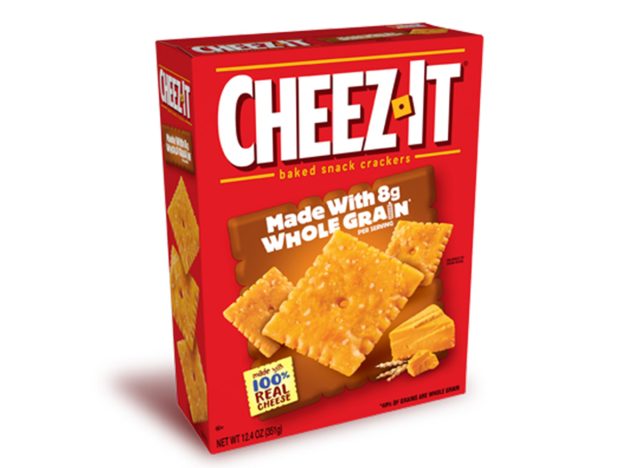
Contains Yellow No. 5 and Yellow No. 6.
Cheez-It Crackers are the ideal combo of salt and crunch that's tasty. While they don't seem as bad for you because they're made with real cheese, that's not the reason for the color. The addictive little squares contain Yellow No. 5 and Yellow No. 6.
Carolina Bright Leaf Skinless Frankfurters
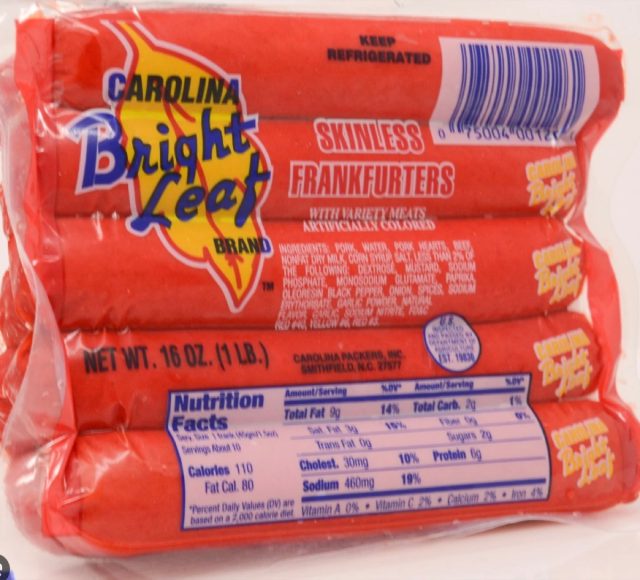
Contains Red 40 and Yellow No. 6.
These vividly red hot dogs are a North Carolina classic, often praised for their unique color and old-school flavor. But that bright hue comes from Red 40 and Yellow 6, two petroleum-based synthetic dyes the FDA is now moving to eliminate from the U.S. food supply. Federal regulators are urging food manufacturers to phase out these additives in favor of natural alternatives already used in other countries.
Navel Oranges (Some Varieties)
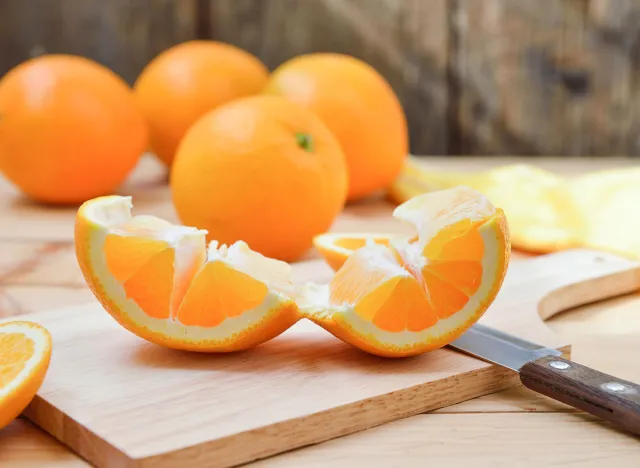
Peels may be treated with Citrus Red No. 2 (being pulled from authorization soon).
Oranges might not be the color they appear. According to the FDA, some are treated with Citrus Red No. 2 to enhance their color "if they are not intended or used for processing and they meet the maturity standards for the states in which they are grown." Oranges, particularly from Florida, might contain the dye on the outside peel to be more attractive to customers, according to Rupa Health. Citrus Red No. 2 is one of the dyes that will be revoked per the FDA's concerns over potential health issues.









